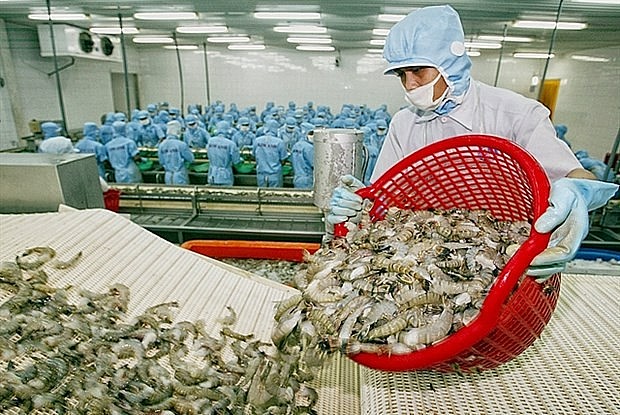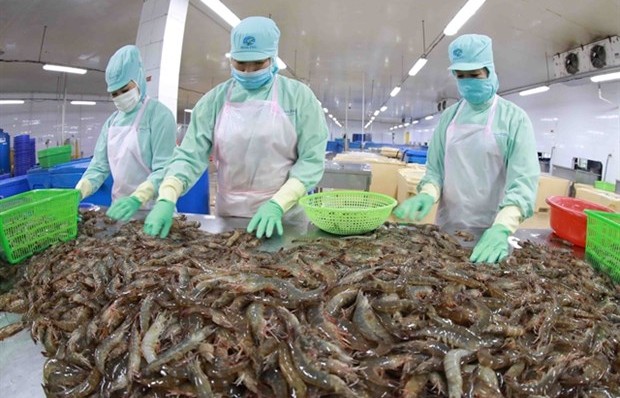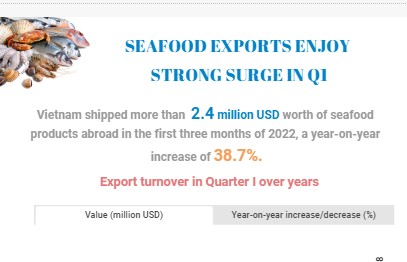 |
| In July, the growth rate of seafood exports continued to slow down to 14% on the year, earning 970 USD million. |
At the beginning of the year, farmers released shrimp due to the forecast that the weather would not be too cold. They have expected to early harvest raw shrimp. However, diseases and the quality of shrimp seeds have affected farming results.
According to Ho Quoc Luc, former chairman of the Vietnam Association of Seafood Exporters and Producers (VASEP) and also chairman of the Sao Ta Foods Joint Stock Company (FIMEX), there are three reasons for the shortage of raw shrimp, including disease, quality of shrimp varieties and water source.
By the end of this year, the supply of raw shrimp will not be abundant, and prices will remain high, said Luc. This will encourage farmers with the right financial conditions to expand production.
Although output has not increased or increased slightly while the world market prices have not increased, the shrimp export revenue is estimated to surge by 10% this year.
The higher export value is due to promoting deep-processed products with higher selling price at shrimp processing enterprises. The higher selling price is partly due to a surge in transport costs, said Luc.
Le Hang, deputy director of the VASEP.PRO Centre, said that the scarcity of raw materials for shrimp and seafood would continue to affect the export results in the third quarter.
After a substantial increase of 39-62% in the first four months of this year, seafood exports showed signs of cooling from May with a growth rate of 34%. In June, it only increased by 18%.
In July, the growth rate of seafood exports continued to slow down to 14% on the year, earning 970 million USD. It was down 4% compared to June 2022, according to Hang.
In the first seven months, shrimp exports reached 2.65 billion USD, up 22% over the same period last year.
Domestic shrimp production and world shrimp demand are forecast to not be positive in the second half of the year.
The shrimp supply from producing countries increased sharply in the first half of this year. The import volume of major markets, such as the US and EU, also increased in the first half, leading to an increase in inventories. Therefore, there was a slowdown in demand in the second half.
Meanwhile, domestic shrimp production is facing difficulties due to weather and high costs, so raw shrimp will be in short supply in the year's second half.
The export of pangasius, another key item, surged by 56% to 197 million USD in July.
The total pangasius exports in the first seven months of this year reached 1.6 billion USD, up 79%.
When inflation is too high in many countries and export prices tend to increase, consumers in those countries will tighten their spending and switch to affordable products such as frozen pangasius fillets, fish cakes, and other frozen products, Hang said.
Seafood export to the US in the first seven months reached nearly 1.5 billion USD, up 31% over the same period last year, Hang said.
Shipments to the EU still maintained a growth rate of 28% in July and 39% in the first seven months, with a total value of 829 million USD, compared to the same period in 2021.
Meanwhile, seafood export value to China in the first seven months grew by 71% to 1 billion USD./.



















































